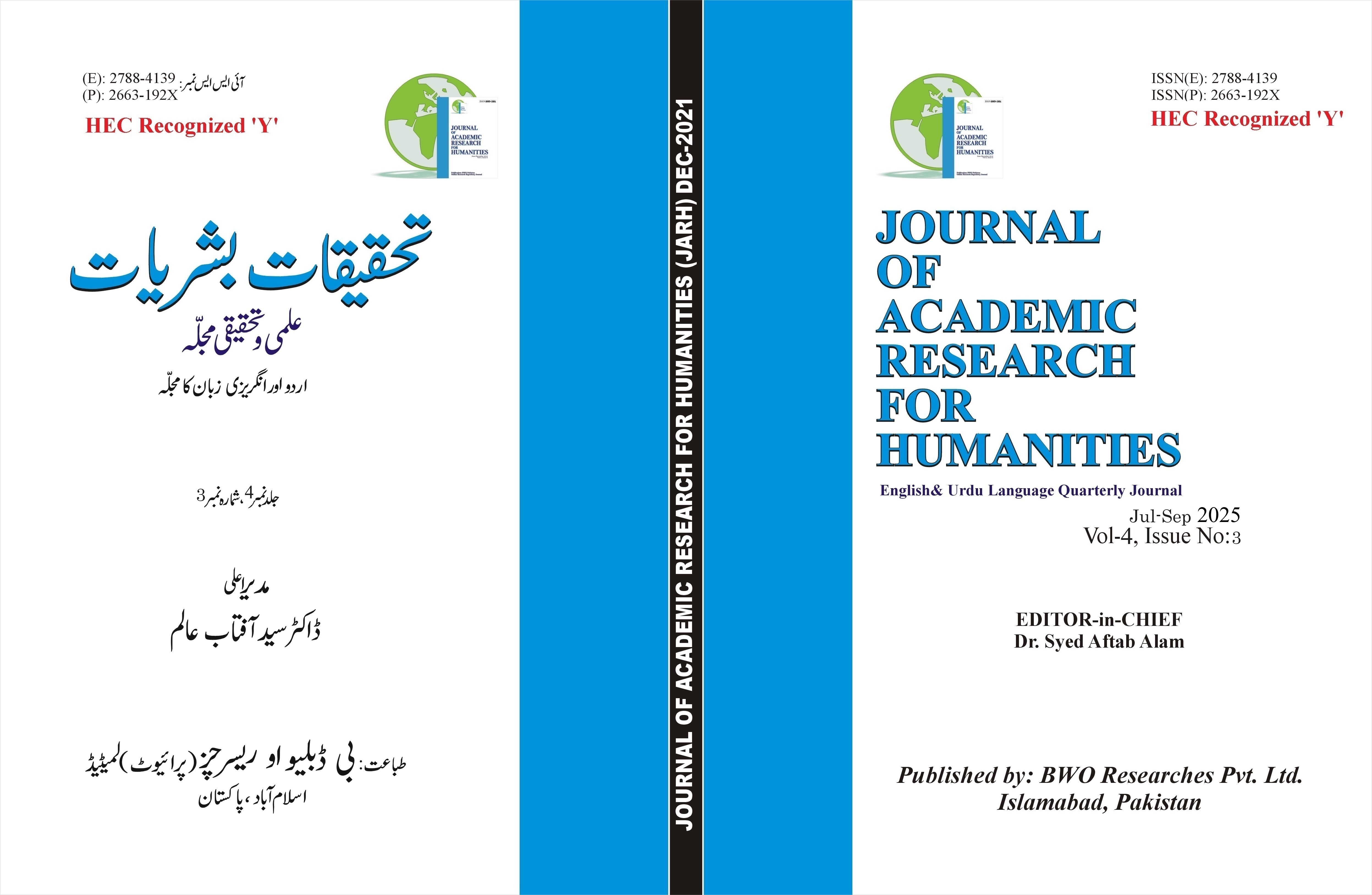Post-Partition Resettlement In Shaukat Siddiqui’s God’s Own Land: A New Historicist Analysis

Abstract
The paper examines child labour as a resettlement issue in Shaukat Siddiqui’s God’s Own Land (Khuda Ki Basti). It examines how, following the 1947 Partition, pervasive poverty and displacement forced families to enlist their children in labour across several sectors, including factories, workshops, and home-based enterprises. The novel depicts child labour as a severe yet essential way of survival for communities endeavouring to rebuild their lives in newly established Pakistan. Considering New Historicism as a theoretical framework to analyze the influence of historical, socio-political, and economic influences on the normalization of child exploitation in the chosen text. The findings suggest that child labour in this environment is not merely a familial choice but a manifestation of wider systemic failure, encompassing inefficient governmental policies, imbalanced distribution of economic resources, and the absence of accessible education. The study also uncovers the enduring repercussions of this exploitation, especially its contribution to driving youngsters into cycles of marginalization and criminality. The study advises state institutions and communities to implement significant measures to eliminate child labour, highlighting education as a crucial instrument for prevention. It concludes by framing child labour not as an isolated social ill, but as a structural problem deeply embedded within the socio-economic dynamics of post-Partition resettlement.
Keywords
Child labour, Partition literature, New Historicism, , Stephen Greenblatt, , Shaukat Siddiqui, , Postcolonial studies, , Resettlement, , Pakistani literature
References
- Ashraf, H. (2016, February 29). Urdu's greatest novels: From Khuda ki Basti to
- Chaar Deewari. *The Nation*. https://www.nation.com.pk/29-Feb-2016/.
- Bertens, H. (2017). Literary theory: The basics: 4 Park Square, Milton Park, Abingdon, Routledge.
- Brannigan, J. (2016). New Historicism and Cultural Materialism: Macmillan International Higher Education.
- DeMause, L. (1995). The History of Childhood: Jason Aronson, Incorporated.
- Eliot, S., & Owens, W. (1998). Introduction to the Handbook. A Handbook to Literary Research, 1.
- Foucault, M. (1990). The History of Sexuality: An Introduction, volume I. Trans. Robert Hurley. New York: Vintage, 95.
- Greenblatt, S. (1985). Shakespeare and the Exorcists: na.
- Greenblatt, S. (2012). Renaissance self-fashioning: from More to Shakespeare: University of Chicago Press.
- Hussain, M., & Maskus, K. E. (2003). Child Labour Use and Economic Growth: An Econometric Analysis. World Economy, 26(7), 993-1017.
- Labour, C. A textbook for university students (2004). International Labour Organization.
- Leach, R. (2008). The basics: Theatre studies. In: London and New York: Routledge.
- Montrose, L. (1989). Professing the Renaissance: The Poetics and Politics of Culture: na.
- Moretti, F. (1982). A Huge Eclipse: Tragic Form and the Deconsecration of Sovereignty in The Forms of Power and the Power of Forms in the Renaissance. Genre Norman NY, 15(1-2), 7-40.
- Myers, D. G. (1989). The New Historicism in Literary Studies. Academic Questions, 2(1), 27-36.
- Nazir Ali, R. (2014). Famous Novelists – Shaukat Siddiqui.
- Organization, W. H. (2013). Ending preventable child deaths from pneumonia and diarrhea by 2025: the integrated Global Action Plan for Pneumonia and Diarrhea (GAPPD).
- Rai, R. K. (2014). History of child rights and child labour.
- Saif, S. (2018). Comments on Khuda Ki Basti.
- Shrestha, K. (2011). Socio-Economic Condition of Rag Picker Children. Doctoral Dissertation, Tribhuvan University, Kathmandu, Nepal,
- Siddiqui, S., & Matthews, D. J. (1991). God's Own Land: A Novel of Pakistan: Paul Norbury/UNESCO.
- Talbot, I. (2012). Pakistan: A New History: Hurst.
- Verkaaik, O. (2009). At home in Karachi: Quasi-domesticity as a way to know the city. Critique of Anthropology, 29(1), 65-80.
- Zuberi, N. A. (1991). Development and anti-development messages in Pakistan TV, entertainment, advertising and films. Media Asia, 18(2), 78-83.